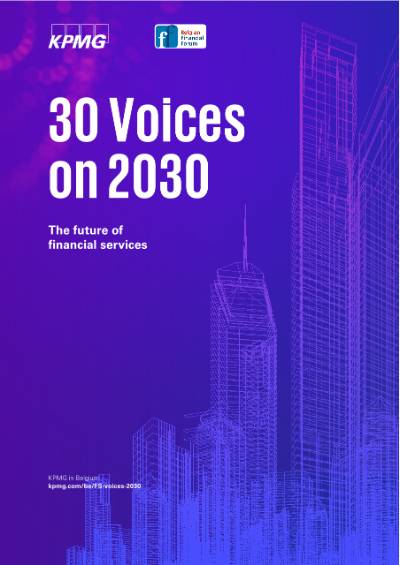There is a famous quote in the book Il Gattopardo, the masterpiece by Giuseppe Tomasi di Lampedusa: “Everything must change, so everything stays the same”. That credo applies perfectly to the financial services sector in 2030, says Professor Leonardo Iania.
Yes, there has been an intense consolidation wave amongst general banks, and yes, the importance of some service models has seriously declined, while others have thrived. But the basic principles of banking are still the same, just as the basic needs of the clients are still the same: to foster economic activity via maturity transformation and risk transfer. Of course, new risks have emerged or consolidated, like climate change and the aging population in many developing countries. This has put pressure on pension funds and insurers, forcing them to seek safe havens and hedge these new risks. But it has created also new opportunities via the green revolution that has started in Europe.

Leonardo Iania
Prof. Economy UCL
Toxic combination
The single most important driver in financial services has undoubtedly been climate change and the related energy transformation. The management of enormous projects and financial streams that these have brought with them is an opportunity banks have seized en masse. Even more so, European banks can export this knowledge outside of Europe and make a viable business out of it.
These new opportunities have come at an enormous cost, which weigh heavily on government balance sheets. For every degree that the temperature rises, the GDP of EU countries declines, with stronger negative effects for Southern countries, which are already under the enormous pressure of their large debt ratios and their changing population pyramid. This delicate situation has brought both political and civilian uproar about higher retirement ages and more people in poverty. It also puts pressure on Europe as a whole and causes (yet another) schism between the North and the South.
With every degree the temperature rises, GDP declines

America
I already mentioned that banks in Europe will be key players in the financing of sustainability projects, filling a gap left by their American counterparts. As late as 2022, several American banks - like Bank of America, Citi, and Wells Fargo - still poured billions of dollars each year into fossil fuels, claiming it was not their duty to check what their money was being used for. Through the years is has become clear that without pressure from bank shareholders, fully-fledged ESG choices will be difficult to implement, even with a regulatory framework in place.
Technology
Although we must differentiate retail banking from wholesale and other services, it is easy to identify the second driving force in the financial services sector besides climate change: technology. Most international transactions are now done through digital currencies. The wholesale transition will be more efficient thanks to the introduction of central bank digital currencies dedicated to this market segment. In underdeveloped countries, digital currencies and technologies like blockchain have been a lever to provide more people with bank accounts and access to (mainly retail) monetary transactions.
In the Western world (Europe and the USA) that evolution is less obvious for the retail sector. Partly because our central banks don’t like this idea, partly because it puts serious pressure on the margins of banks. Nevertheless, banks will have to learn to adapt to business models that generate lower margins. That is a serious challenge, especially in Europe, where margins are already quite low. Established banks have one secret weapon however: consumer trust. Consumers have faith in the banks that have been around for sometimes hundreds of years, much more than in new and inexperienced technology companies. That is an advantage that banks must (and will) exploit to the fullest.
Google, Amazon, & Alibaba
One positive thing that blockchain technology provided is undoubtedly a higher degree of security. Cybercrime, phishing, smishing, and digital holdups have become much more difficult because of better security technology. That does not mean that security providers, blockchain platforms, or even general technology players have been able to steal business from the established banks. There is no way that companies like Google, Amazon, or Alibaba will be allowed to provide full banking services. The reasons are simple: power concentration and privacy. Central banks have refused to back them in the credit business, for example. Even more so because nobody wants to see them combining the financial information of their customers with all the other information they already have. In that case, they would become a sort of mini-government, which is an idea that will never fly. That’s why the digital disruption in the financial services sector has been reasonably easy for current players to manage and ward off.
About the interviewee
Leonardo Iania is a Professor of Finance at Louvain School of Management and a Visiting Professor at KULeuven. Previously, he was an Economic Expert at the National Bank of Belgium. His main fields of interest are (amongst others) the government bond market, macro-finance, the risk differences between European countries and the influence of climate change from a financial perspective.





